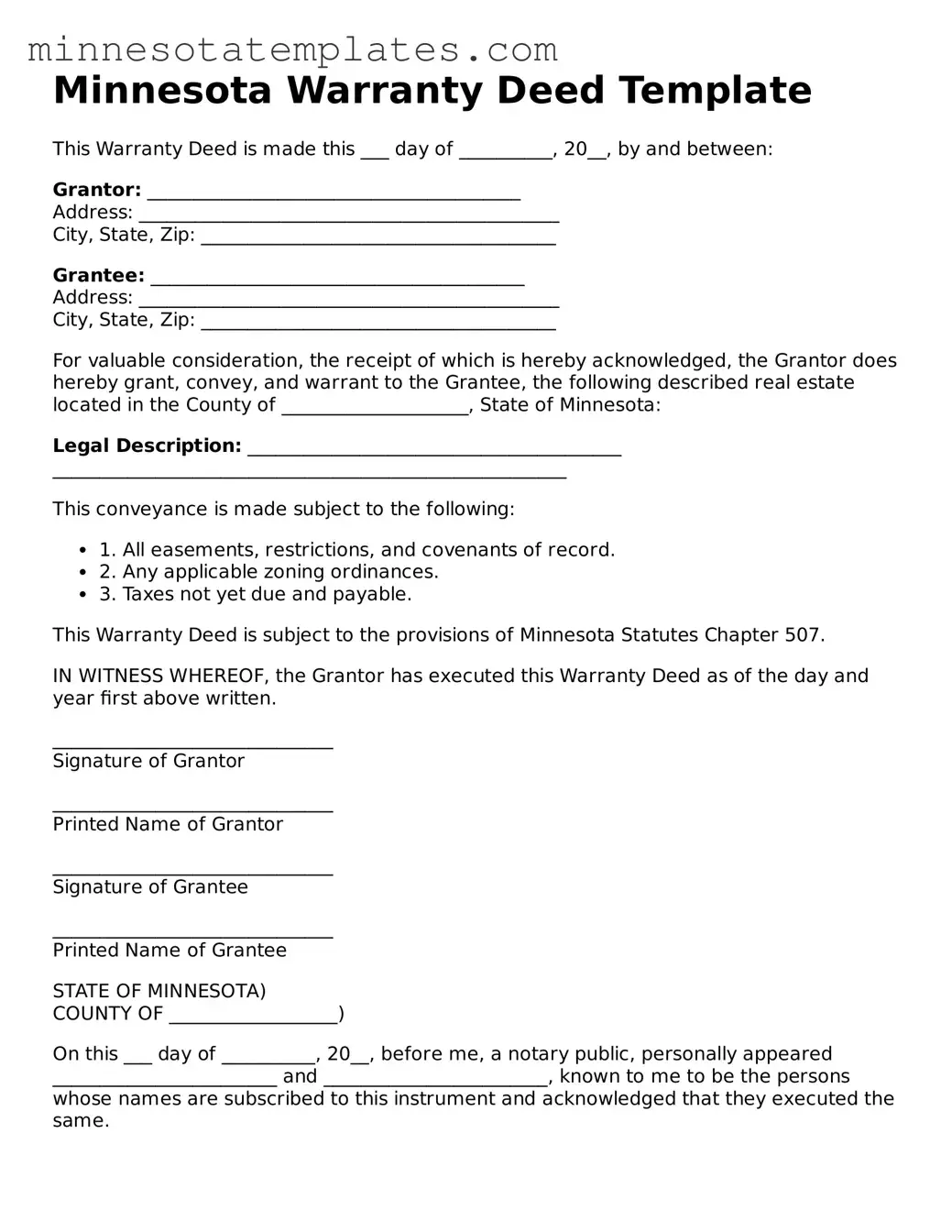The Minnesota Deed form is an important legal document used in real estate transactions within the state. This form serves to transfer ownership of property from one party to another, ensuring that the rights and responsibilities associated with the property are clearly defined. It includes essential details such as the names of the grantor and grantee, a description of the property being transferred, and any relevant terms of the transfer. Additionally, the form may specify whether the deed is a warranty deed, quitclaim deed, or another type, each carrying different implications for the parties involved. Proper execution of this form is crucial, as it often requires notarization and may need to be filed with the county recorder to be legally effective. Understanding the components of the Minnesota Deed form can help individuals navigate property transactions more smoothly and avoid potential disputes down the line.
